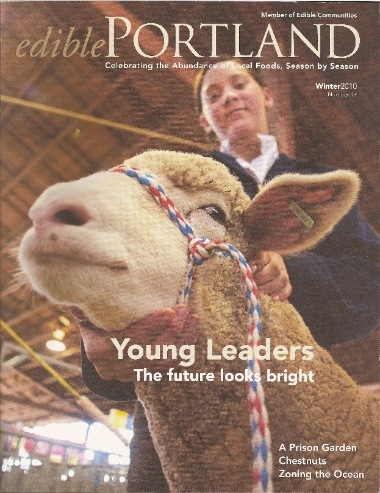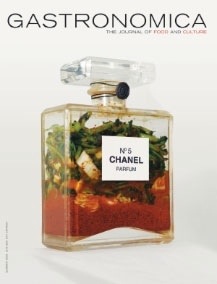Okay, okay, I know these books have a bad rap, just another bunch of rich Americans falling in love with Italy, buying broken down farm houses and writing about their cultural appropriation experiences, but...
Actually reading these books, the authors didn’t come across as preachy, it was much more about their own experiences of visiting and living in Italy.
I’m planning a trip to Italy next year, and these books make me even more excited about wandering around the countryside eating good food and good wine, and maybe even pass as fratelli (brothers), not always stanieri (foreigners).

Under the Tuscan Sun is full of descriptions of discovery in another country, and how far you can go with a sense of adventure and curiosity to experience life. Many parts are related to food, but many others remind me a lot of my own experiences getting to know where I live, even if it’s just in my backyard, and having a sense of awe and wonder, like you were searching for treasure and found it. Here are a few of my favorite quotes:
We hauled histories and guides and wildflower books and novels in and out of rented houses and hotels. Always we asked local people where they liked to eat and headed to restaurants our many guidebooks never mentioned. We both have an insatiable curiosity about each jagged castle ruin on the hillside. My idea of heaven still is to drive the gravel farm roads of Umbria and Tuscany, very pleasantly lost. (p. 8)
and
People travel for as many reasons as they don’t travel. ‘I’m so glad I went to London, a friend told me in college, ‘Now I don’t ever have to go again.’ At the opposite end of the spectrum is my friend Charlotte who crossed China in the back of a truck, an alternate route to Tibet...Once in a place, that journey to the far interior of the psyche begins or it doesn’t. Something must make it yours, that ineffable something no book can capture. It can be so simple, like the light I saw on the faces of the three women walking with their arms linked when the afternoon sun slanted into the Rugapiana. That light seemed to fall like a benison on everyone beneath it. I, too, wanted to soak my skin under such a sun. (p. 145)
The Reluctant Tuscan is refreshing because it doesn’t start off by describing the wonders and glories of Italy, or make it sound like all foodies should pick up and move to Italy. Duran doesn’t hate Italy and then come to love it, there’s a more subtle transition to mutual appreciation that happens. There are a few sharply authentic experiences he has at first, mixed in with all of the other hilarity of living in a foreign country, and he slowly comes to recognize, crave, and embrace the Italian way of life the more time he spends there (the authentic beautiful parts as well as the crazy driving and boisterous attitudes of his italian friends and associates).
Slow Food: The Case for Taste, by Carlo Petrini

Another reason to love Italy is that the
Slow Food Movement started there, after McDonalds dared to put a branch in near the Spanish Steps in Rome. Carlo Petrini, a founding member, protested with others, and formed Slow Food to work to “counteract fast food and fast life, the disappearance of local food traditions and people’s dwindling interest in the food they eat, where it comes from, how it tastes and how our food choices affect the rest of the world.”
Sometimes the Slow Food movement seems too academic to me, it’s more about the ideas and less about people’s actual food experiences, as if everyone MUST be perfectly mindful at every meal and only eat heritage, or most authentic varieties of foods, not just something you humbly grew in your yard, it’s like bourgeoise home grown.
But it’s a heck of a lot better than McDonalds and the like taking over our food experience. I always want/hope that Slow Food will focus more on how people get adopt, to really feel the Slow Food experience, and not just talk about it. I think for Italians they probably just get it already, because of their food culture and implicit understanding of Terroir (Look for a future blog post about French Terrior, by Amy Trubeck). But for most food consumers in the United States, they/we need to learn or relearn the experience of food, so it would be good to know how we learn and relearn to have deep, authentic experiences of food.
Slow Food International is mostly involved in encouraging producers to grow (and people to eat) more diverse and traditional, and locally relevant varieties of foods (such as Barbara Kingsolver’s heritage turkeys) that are at risk of extinction, through their “Ark of Taste” program.

I read this article in the Summer 2009 issue of Gastronomica (see this blog post) about a soup that was such a regional specialty that the American author’s Italian friends had never heard or tasted it, and couldn’t identify the ingredients until the waiter told them they were eating Rooster Comb (you know, the part that flops around on the top of the rooster’s head). For this soup, the comb is cleaned and the tough leathery cover is peeled away to reveal a rubbery gelatinous, but evidentially full of chicken-y goodness flavor.
It’s articles like this that make me even more curious about visiting Italy. The experience of tasting delicious food that’s so specific to a region that it’s unknown outside of it seems so utterly un-American-Industrial-Food-System. There’s no reason that we can’t have our own regional specialties, but we certainly don’t have that kind of strong terroir like Italians (or French, or various other European cultures).
Barbara Kingsolver in Italy
In her book Animal, Vegetable, Miracle (see upcoming blog post), Barbara Kingsolver takes a break from her year of urban homesteading to go to Italy. Her brief descriptions made me want to go to Italy even more! My favorite parts of her journey included:
- Stopping by a roadside produce stand, buying a crazy looking melon for the seeds, convincing the hotel staff to let her cut it open in their kitchen, and spending most of the rest of the trip drying the seeds in various hotel rooms and then packing them up in a towel to move them to the next hotel room on her trip.
- Descriptions of watching Italian men’s slow (and intensely serious) savoring of their food (and her Husband’s adoption of Italian food savoring practices), and her warning (or promise?) to travelers to be ready for spending most of their time in Italy slowly eating their multi-course meals.
Around the Tuscan Table

This delightful ethnography of a multigenerational Italian family gives a glimpse into Italian food culture ranging in time from peasant life in the early 1900s all the way to modern food traditions with women struggling to provide good food for their families while keeping up a more busy (and potentially employed) life, and younger men expressing apathy towards traditional italian foods. Despite many Italian’s transition to “modern” living, all the members of the family still talked in great length about their food practices and food culture, something that might embarrass or confuse food consumers from the U.S. The author described how some of her study participants (especially the older ones) seemed disconcerted that she wanted to hear about their food experiences as children, when they were very poor, as if they thought it should be very obvious what it was like to cure their own olives or go hunting for rabbits, but, nonetheless, they were happy to tell the author about their experiences, since she explained that she really didn’t share their knowledge and experiences. It was almost as if the older participants couldn’t believe that someone could become an adult and not know these (to them) basic food practices. As mentioned above, it would certainly be possible for Americans to talk about their food experiences with the same honesty as Italians, but so often we either don’t know how to talk about food, or want to talk about food in an elitist, overly verbose way (see the future post on The Taste of Place by Trubek).
Needless to say, I’m very! excited about traveling to Italy to eat, explore, and become pleasantly lost.





















